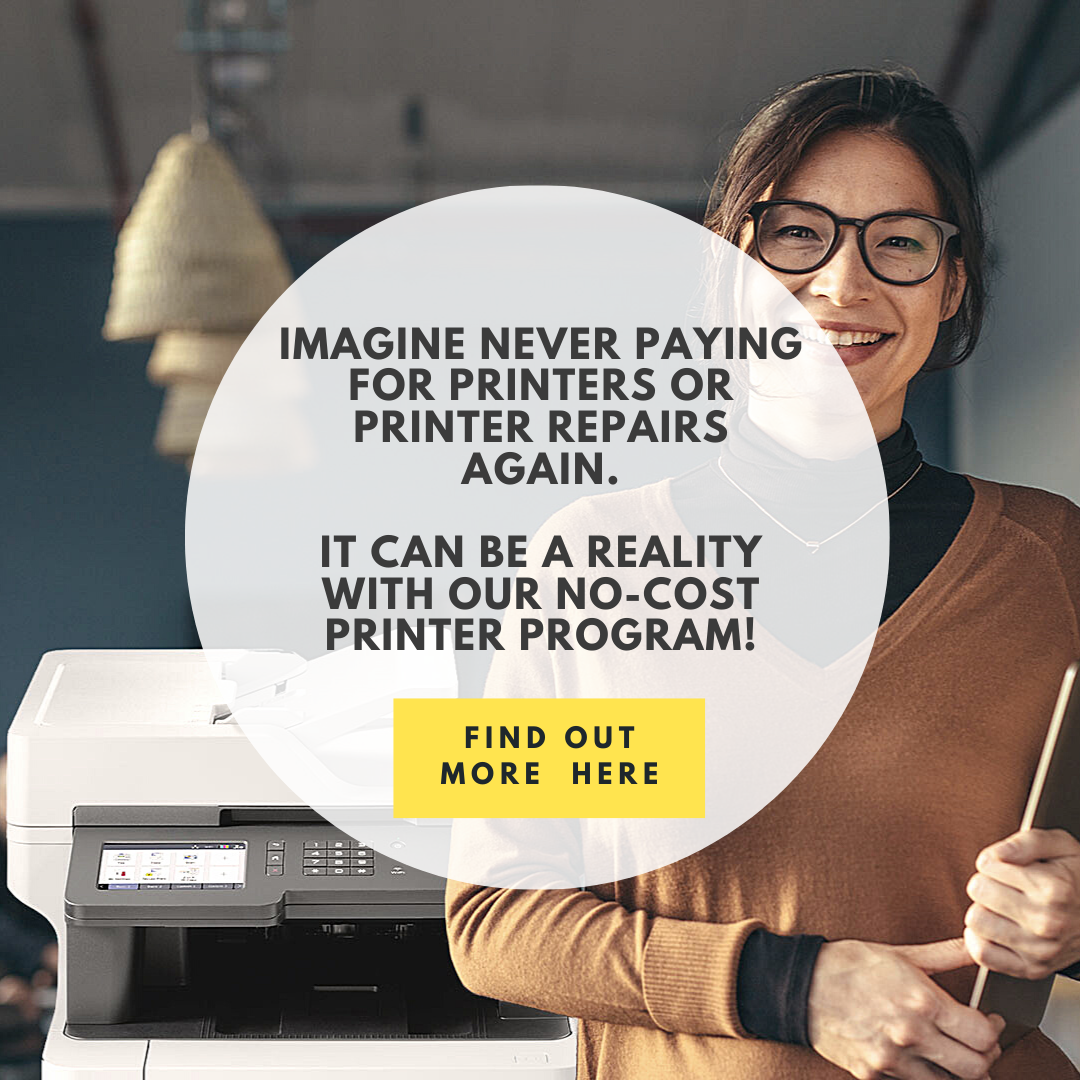Many predictions on the demise of an established product or solution have sputtered. They said email would die. They said vinyl records were a thing of the past — ditto with the computer mouse. One Nobel Prize-winning economist in the 90s even predicted that by 2005 the internet would be as redundant as the fax machine.
The same doom and gloom scenario has been given to printing ever since the digital age went into full swing.
The rumors of printing’s death have been greatly exaggerated. (The same goes with the paperless office)
There are many reasons why print isn’t dead, and we’ll highlight them here (although we don’t know if we can make a case for the fax machine).
Printed Documents Are Still In-Demand
We service the printers of many law and accounting firms, and we know printed materials are crucial to these verticals. Showing up to trial or an audit with an iPad is just not conducive to effective work. There are many more reasons, cyberattacks being one of them, but all involve the fact that legal and accounting entities depend on keeping detailed and available psychical records.
Even in the education field, print remains relevant. As an illustration, one school district with 10,000 students, teachers, and staff employed approximately 28 million sheets of paper annually. According to one survey, teachers use as many as 75 sheets of paper daily; moreover, approximately 10 percent of a school’s annual budget goes to printing.
Beyond print-heavy organizations, the reality is that 95 percent of all organizations still store information on paper. Paper consumption worldwide has tripled over the last 30 years.
Does this sound to you like printers across the country going silent? The quietness of the paperless office?
Print Marketing Works Very Well
As an article in Chapeltown contends, consumers trust printed media more than digital media. We love the internet, but we engage better with physical materials.
Here are some startling statistics from the article to stress the efficacy of printed materials:
- Ninety-two percent of people will read door drops that are delivered to their home
- Seventy-three percent of people will hold onto advertising mail for future use
- Seventy percent of people will keep a company that has sent them physical mail in higher regard
- Eighty-seven percent of people will rate the content in printed material as believable
If you want to grow your business or deeply connect with your audiences, don’t overlook print marketing.
And don’t think the younger generation is going to turn their back on printed materials. A study found that 28 percent of GenZ’s read trade magazines and a whopping 75 percent read at least one magazine publication a month.
Print is Part of Digital
Throwing the baby out with the bathwater is never good. Print is an excellent complement to digital. As mentioned, physical touch is important for marketing. To stress this point, a FreeportPress article stated that Millennials find a physical experience more memorable. The piece expands on a USPS study and quotes Heather Fletcher of Target Marketing:
“The study itself says touching printed materials while looking at them triggers spatial memory in a way that other channels don’t, leaving a footprint deeper in the brain. The deeper in the mind the material goes, the more mental processing it requires, making it seem more real and require more of an emotional response. Emotional responses are more likely to be positive toward brands.”
Even when it comes to books, SurveyMonkey research stated that most readers read eBooks primarily for their convenience but also read physical books because of the experience of comfort. What’s more, a Scientific American study revealed that people prefer and absorb information better when it’s in printed form.
Mind you, Millennials (and all generations) aren’t going to ditch their mobile devices for magazines. We live in a digital world, and that’s not going to change. The point is that print and digital should go hand in hand when it comes to any impactful marketing.
You Can’t Beat Nostalgia
We mentioned in the beginning how vinyl records haven’t gone away. They’re popular with younger generations. The same can be said with other allegedly dated products like polaroid cameras, the Rubik’s Cube, and bean bags. What is old sometimes becomes new again (and very in-demand!)
At the same time, Millennials are the most nostalgic generation of any age, according to research. The research also claimed that digital experiences don’t satisfy emotional needs, so once again, those corny and old printed materials can a huge advantage when it comes to engaging audiences.
Print Isn’t Evil
We know that printing can be a strain on natural resources. As we’ve detailed in our environmental efforts and education, an average worker prints 10,000 sheets per year while it takes one tree to produce 9,000 printer pages. Just as serious, half the paper produced in the west is discarded.
These statistics have given printing a bad image, with good reason, but it’s getting better even if we can all do better.
According to the EPA, North America paper is recycled more than any other commodity. The benefits include extending wood fiber supply, decreasing greenhouse gas emissions, and saving landfill space. Furthermore, the EPA offers a list of resources that can help anyone be more sustainable, even if every day papermakers in the country recycle enough paper to fill a 15 mile-long train of boxcars.
Bear in mind that paper is also a renewable resource (meaning it can be regrown or replenished in one or two human lifetimes). The truth is that paper often comes from managed forests or farms, which replant about four million trees every day (four times more than they harvest).
What about those pesky mailers or postcards (which work very well for marketing, as you’re finding out here)? Statistics say that 70 percent of all cardboard is recovered for recycling. Note that recycling cardboard only takes 75 percent of the energy need to make new cardboard; and recycling one ton of cardboard saves 46 gallons of oil.
There is still much work to be done when it comes to printing green, and we suggest downloading our free eBook Green Office Printing Guide. But there is no reason to think that printed materials are bringing us closer to an ecological apocalypse.
As you can see, print is alive and well.
We can’t help you with Elvis being alive or the future of the fax machine, but we do hope that you’re closer to leveraging printing for superior business marketing, security, and even sustainability.
Looking for a dependable and eco-friendly printer experience? Contact a local Cartridge World today for innovative print management services.







